A Neural Pipeline System for Natural Language Generation
July 2019
Henry Elder, ADAPT Centre
Dublin City University
Supervisors: Jennifer Foster, Alexander O'Connor
Overview
-
Introduction
-
Research Methods
-
Current Progress
-
Conclusion
Natural Language Generation
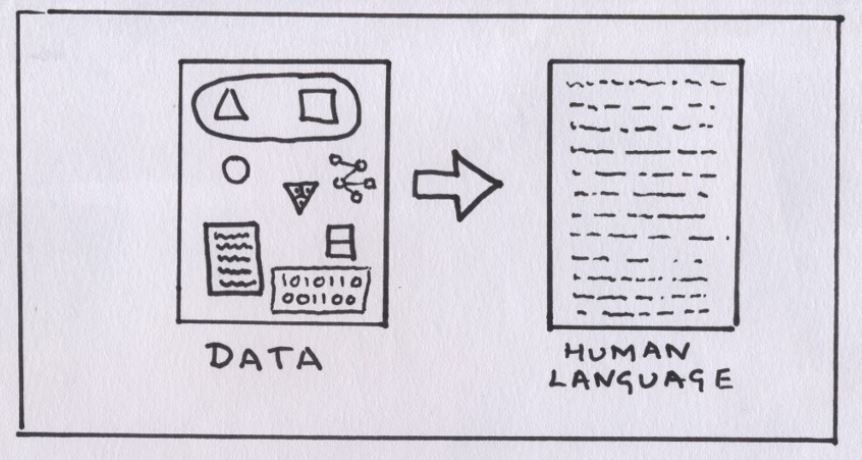
https://www.vphrase.com/blog/natural-language-generation-explained/
Neural NLG

Stephen Merity. 2016. “Peeking into the Neural Network Architecture Used for Google’s Neural Machine Translation.” https://smerity.com/articles/2016/google_nmt_arch.html
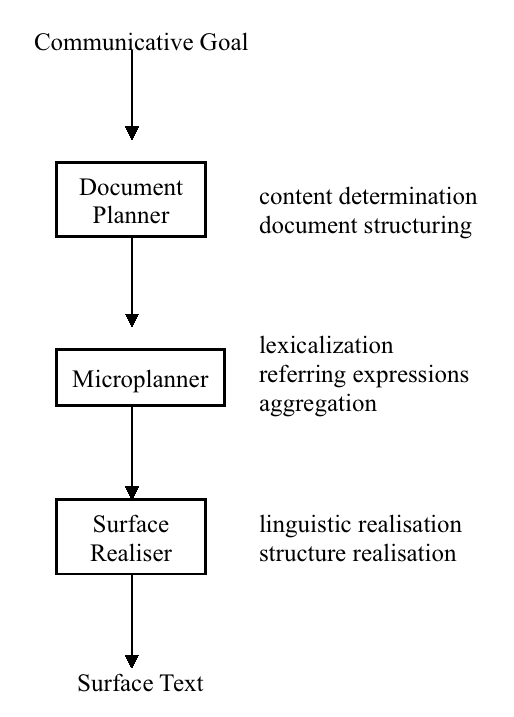
Traditional Pipeline Systems
Ehud Reiter and Robert Dale. 2000. "Building Natural Language Generation Systems"
Requirements of NLG systems
-
Adequacy
- Utterances include all relevant information
-
Fluency
- Information expressed correctly and fluently
Problems with Neural NLG
- Repetition
- I am a famous twitch streamer streamer streamer streamer
- Contradiction
- I do not like to read, but I do like to read.
- Ignores rare words
- Hallucinates facts
- My dream job is looking for a new job.
- Adequacy and missing information
Our Proposed Approach
-
What to say
- Content Selection
-
How to say it
- Surface Realization
Research Questions
- What is the best intermediate representation to use for surface realization?
-
How can we generate intermediate representations as part of the content selection step?
Research Methods
Modelling

Source unknown
Creating Datasets
- Automatically constructed e.g. by scraping the web
- Crowdsourcing
- Programmatically created e.g. by parsing
Intermediate Representation
You will find this local gem near Cotto in the riverside area.

Evaluation
-
Automated metrics - Not that informative or useful!
-
N-gram overlap e.g. BLEU
-
Perplexity, edit distance
-
-
Human evaluation
-
Count based metrics
-
Ranking
-
Current Progress

WebNLG Challenge
Results: Top scores in all automated and human evaluation metrics on the seen subtask out of 9 systems. But relatively worse than other systems on unseen subtask
Lessons learned: Baseline seq2seq model very strong performance, especially given graph like nature of inputs
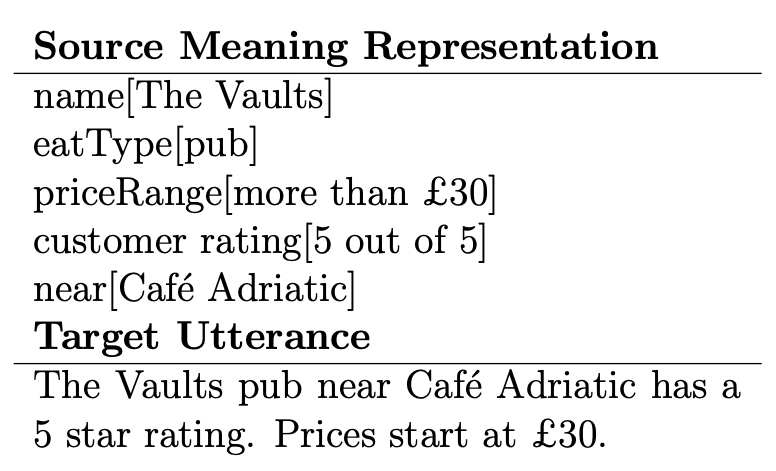
E2E NLG Challenge
Results: Joint submission with Harvard NLP got top METEOR, ROUGE, and CIDEr scores out of 60 systems. Own diversity enhancing approach performed worse than baseline
Surface Realization Shared Task
Results: Top scores in all automated metrics and first for readability in human evaluation for English out of 8 system. Only team to enter the deep track
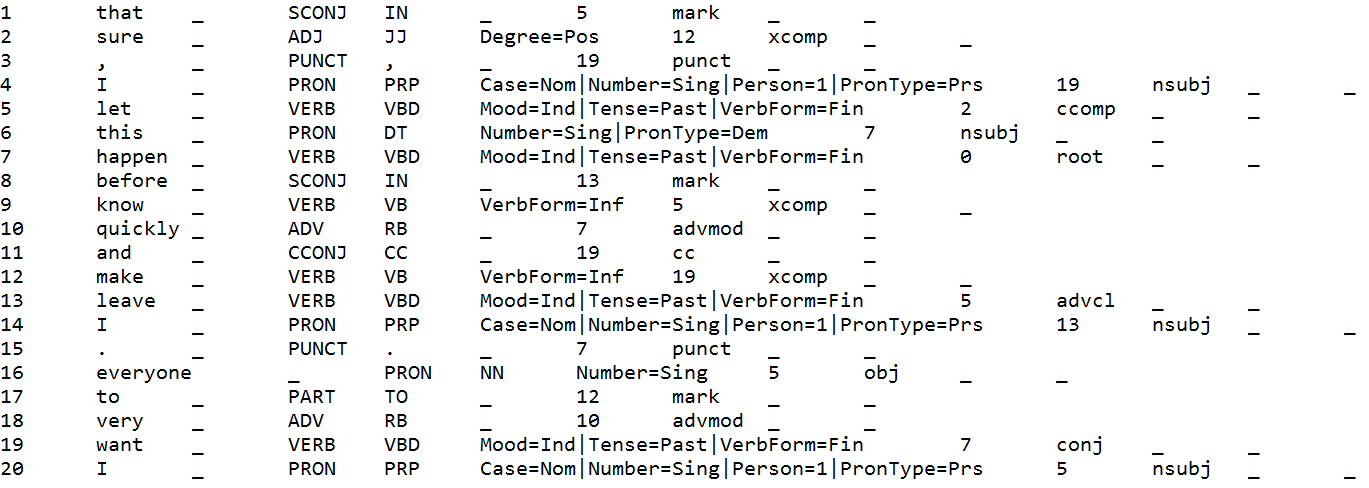
Target Sentence: This happened very quickly, and I wanted to make sure that I let everyone know before I left.
ConvAI2
Results: Ranked second on the automated evaluation leaderboard out of 23 systems. But performed worse in human evaluation, ranking 6th
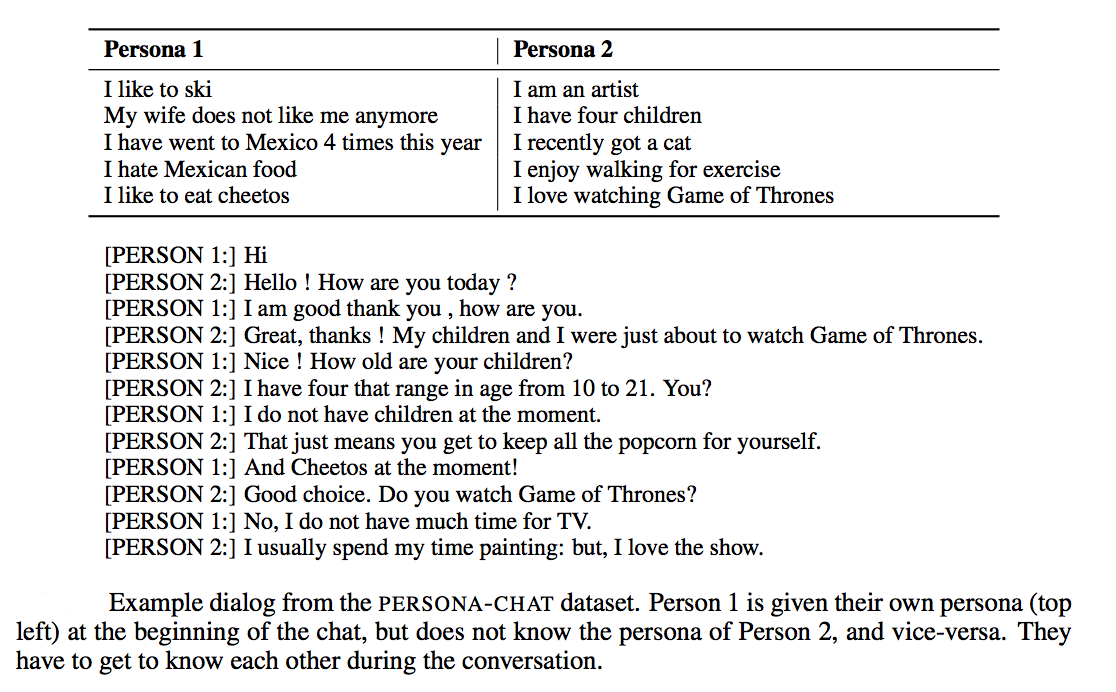
What can we do to improve the reliability of neural-based NLG?
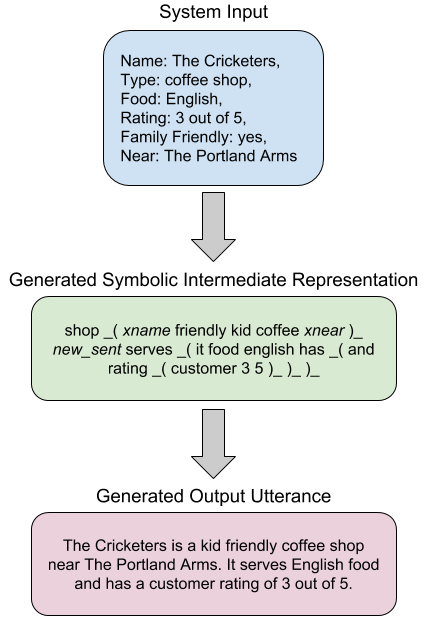
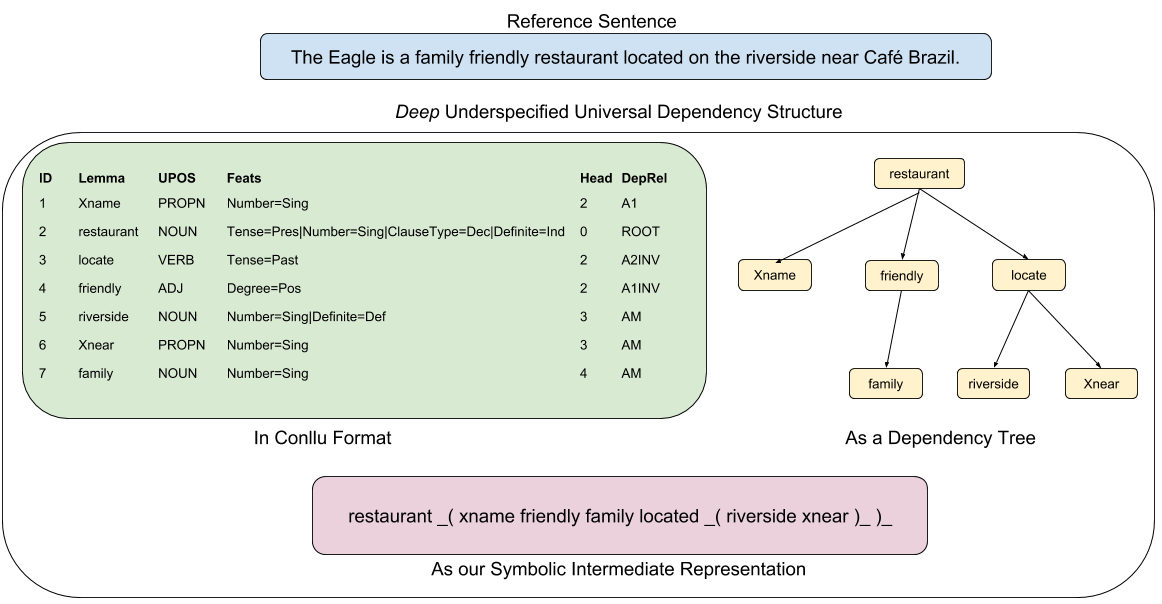
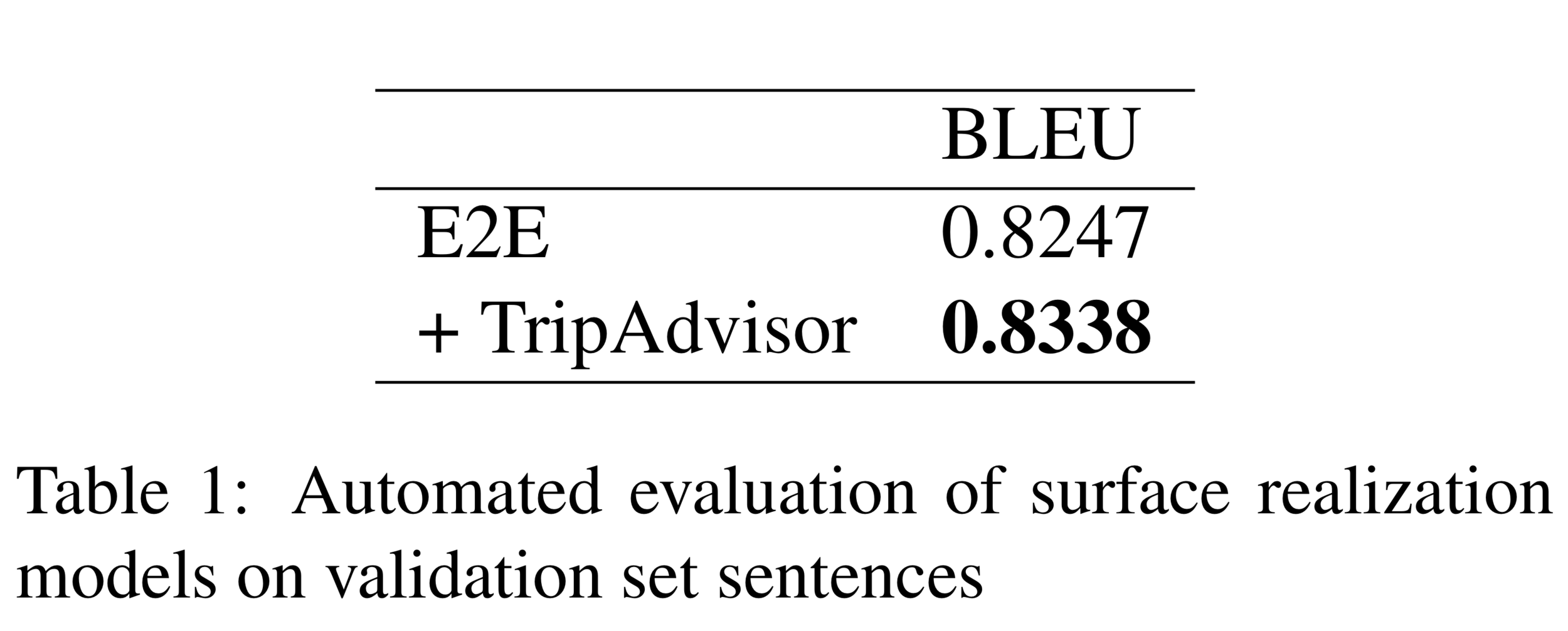
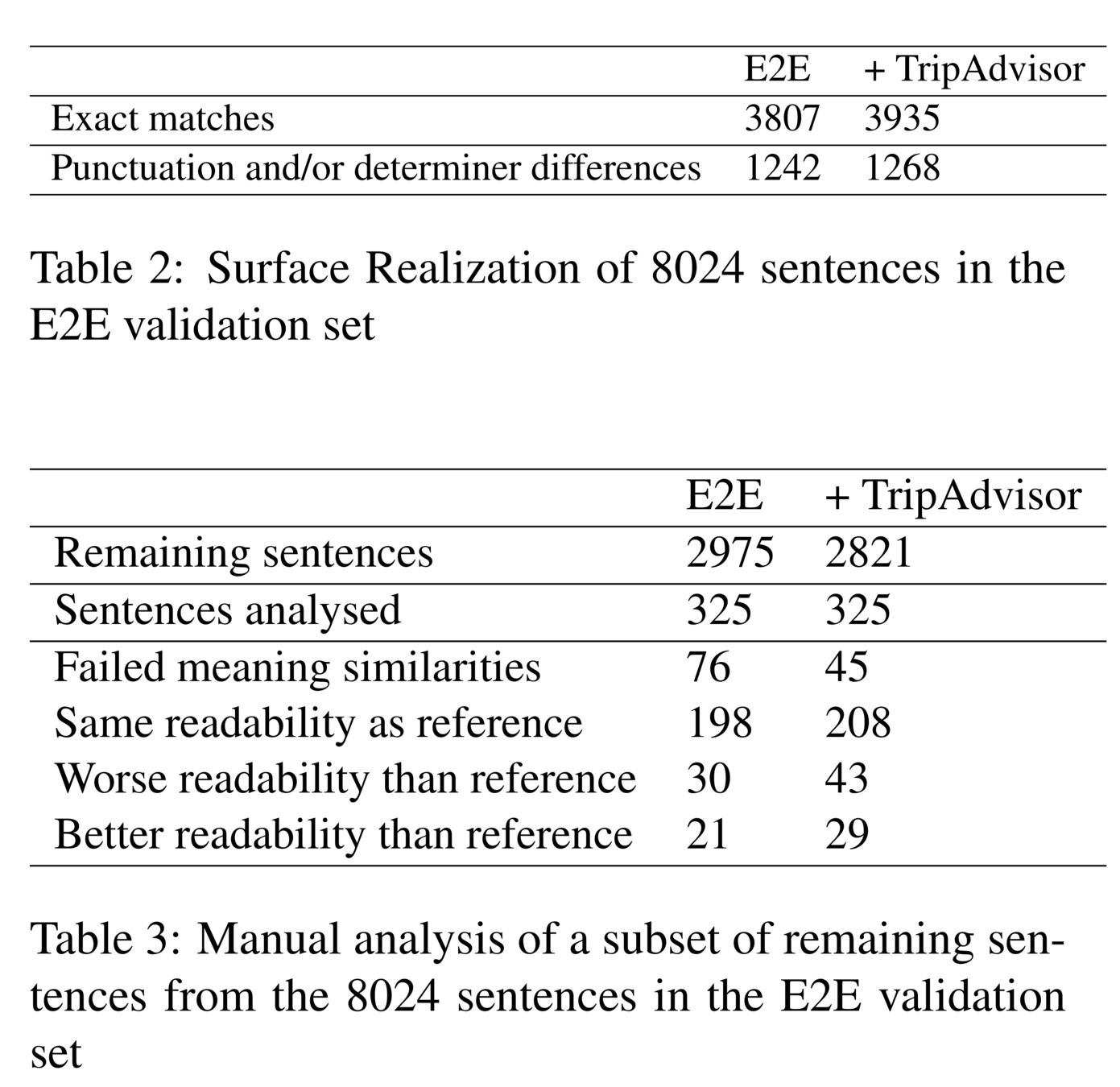
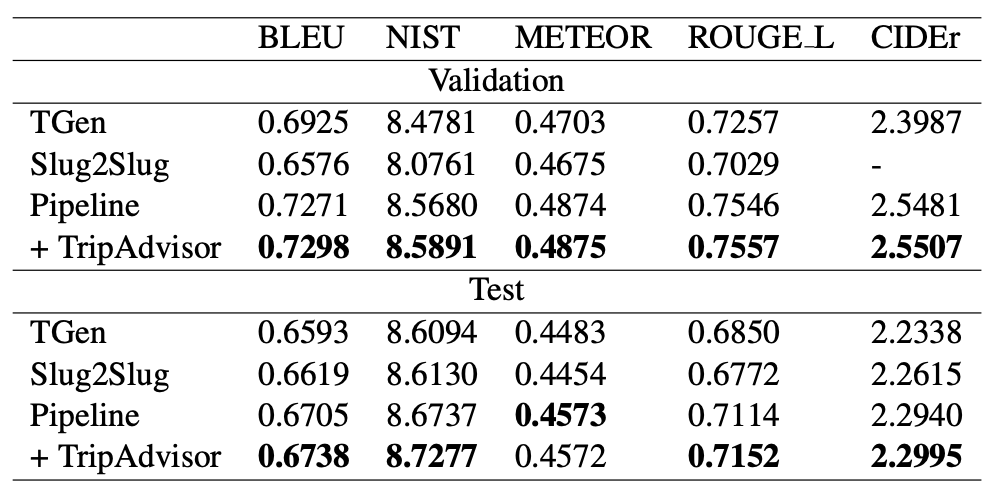
E2E automated evaluation
Takeaway
Multi-stage neural NLG systems are capable of improving the quality of generated utterances (in English).